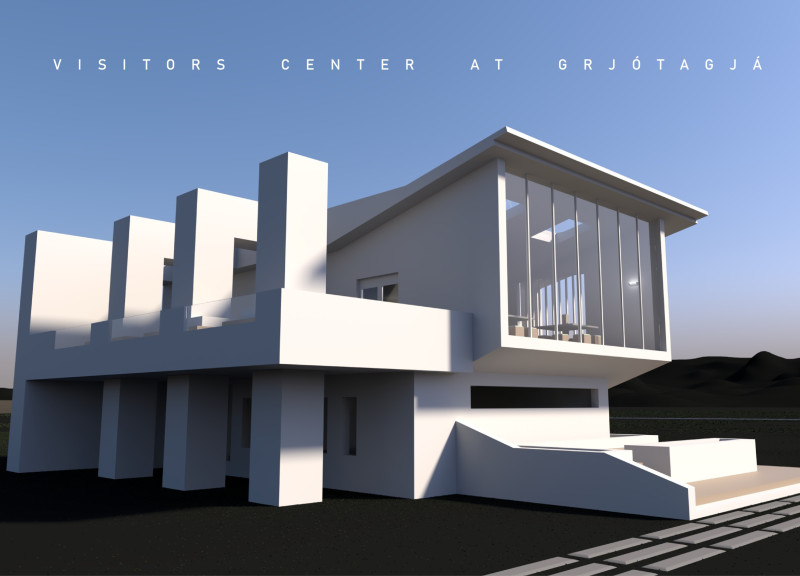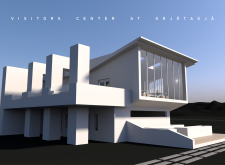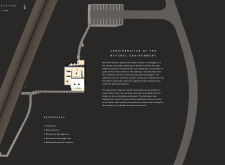5 key facts about this project
Designed as a two-level structure, the Visitors Center combines elements of modern design with practical functionality. The integration of large glass façades allows ample natural light to permeate the interior, creating an inviting atmosphere that connects visitors with the landscape outside. This design approach is intentional, as it fosters a sense of openness and enhances the visitor experience by blurring the boundaries between indoor and outdoor spaces. The first floor is primarily dedicated to essential amenities, including administrative areas and staff facilities, while the second floor offers community spaces such as a café and gathering area. These functional zones are designed to accommodate various activities and diverse groups, highlighting the center's role as an educational and social hub.
A notable architectural feature of this project is the helical staircase that serves as a focal point within the interior. This element not only provides essential access to different levels but also embodies a dynamic fluidity that reflects movement and interaction within the space. Coupled with strategically placed outdoor balconies, the design encourages visitors to experience the dramatic vistas of Icelandic nature, integrating the building seamlessly within its context.
The materiality of the Visitors Center is carefully selected to resonate with the timeless qualities of the Icelandic landscape. Concrete is utilized as the primary construction material, which offers strength and durability necessary to withstand the region's harsh weather conditions. The extensive use of glass contributes to an open and inviting ambiance while providing uninterrupted views of the surrounding terrain. Additionally, warm wooden elements incorporated in the interior design serve to enhance the tactile experience and create a balance against the more rigid concrete surfaces.
Another important consideration in the design is environmental sustainability. The center implements rainwater collection systems as part of its architectural features, promoting responsible water use and reducing its ecological footprint. The building’s placement further minimizes impact on the environment, ensuring that the landscape’s integrity remains intact while still providing a space for visitors to engage with it.
The Visitors Center not only stands as a functional facility but also as an architectural expression of place, reflecting the cultural heritage of Iceland through its design. It prioritizes visitor engagement and environmental consciousness, setting a positive example for future developments in ecotourism and architecture in sensitive ecological areas.
To explore more about the Visitors Center at Grjótagjá, including architectural plans, architectural sections, and architectural designs that illustrate its innovative ideas, readers are encouraged to delve deeper into the project presentation. This offers an opportunity to understand the intricate details and design philosophies that shaped this architectural endeavor.


























